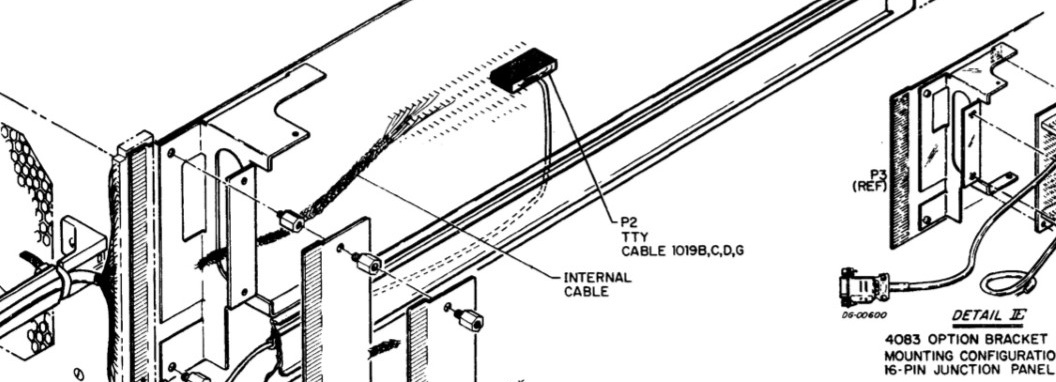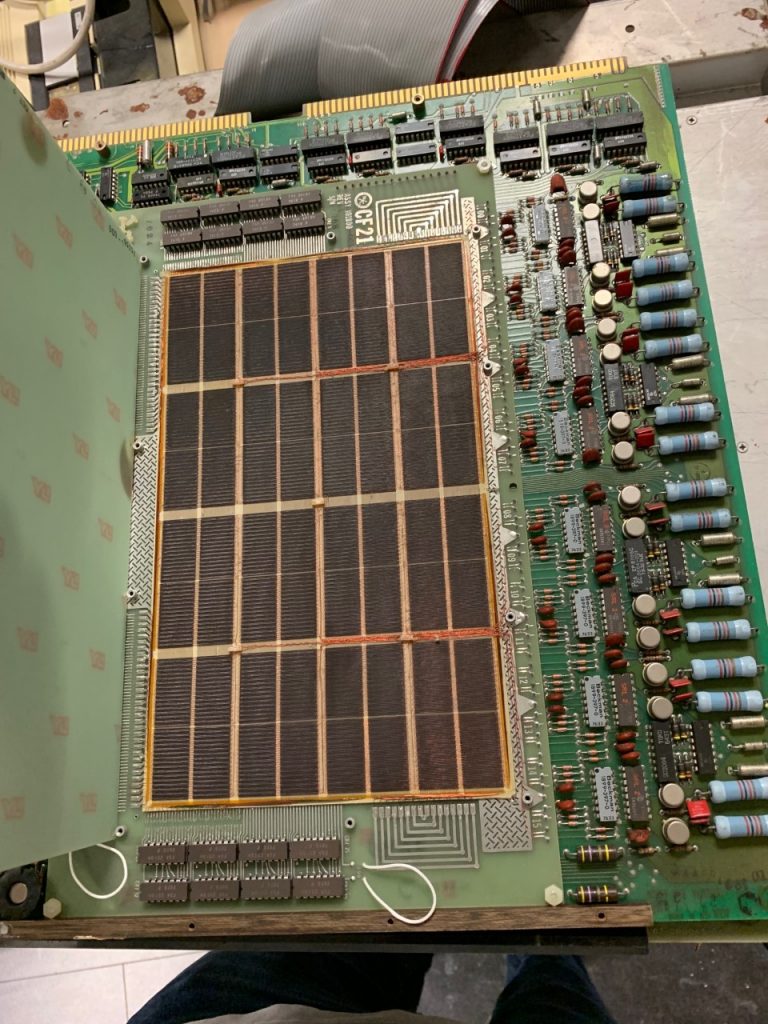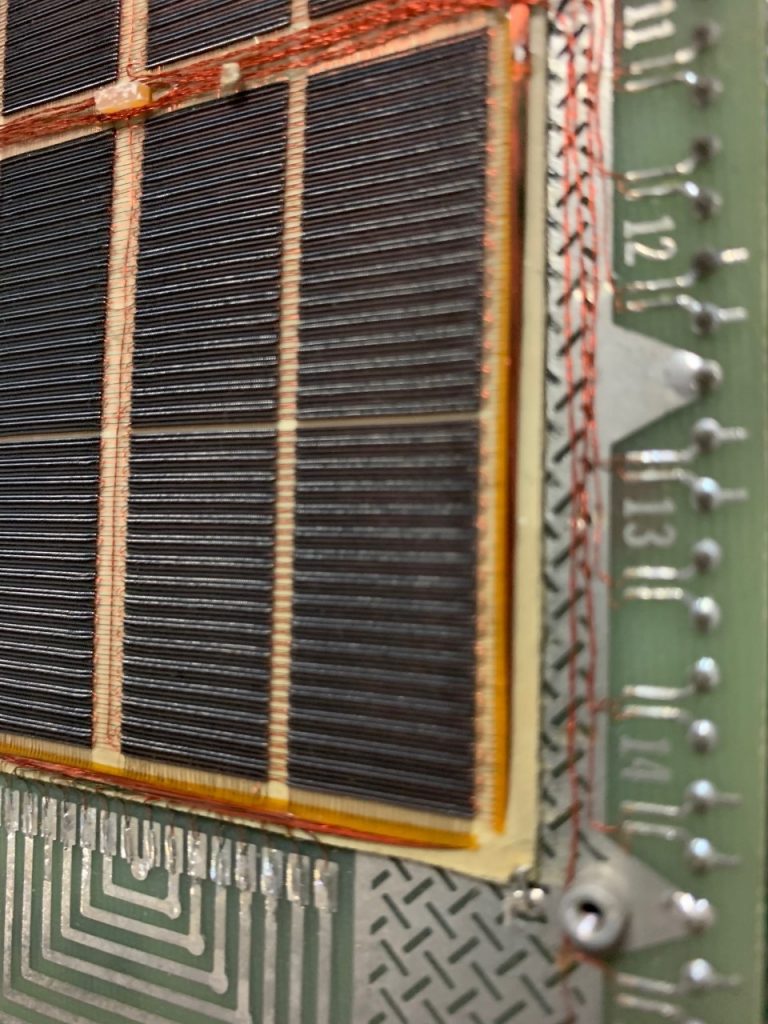So the other day I was over at the storage site where we keep the old Nova 2 to check out in detail what we got in terms of hardware in the computer and maybe establish a serial Connection.
For making the serial connection I prepared an old Amstrad ALT-386SX portable computer my dad had still laying around. I figured the serial connection on that thing might be more compatible to old things than modern serial chips that mostly are just used with TTL voltages. I installed a copy of Kermit by the University of Columbia since it supports already a tonne of protocols and is able to emulate a very wide range of terminals, including a couple from Data General.
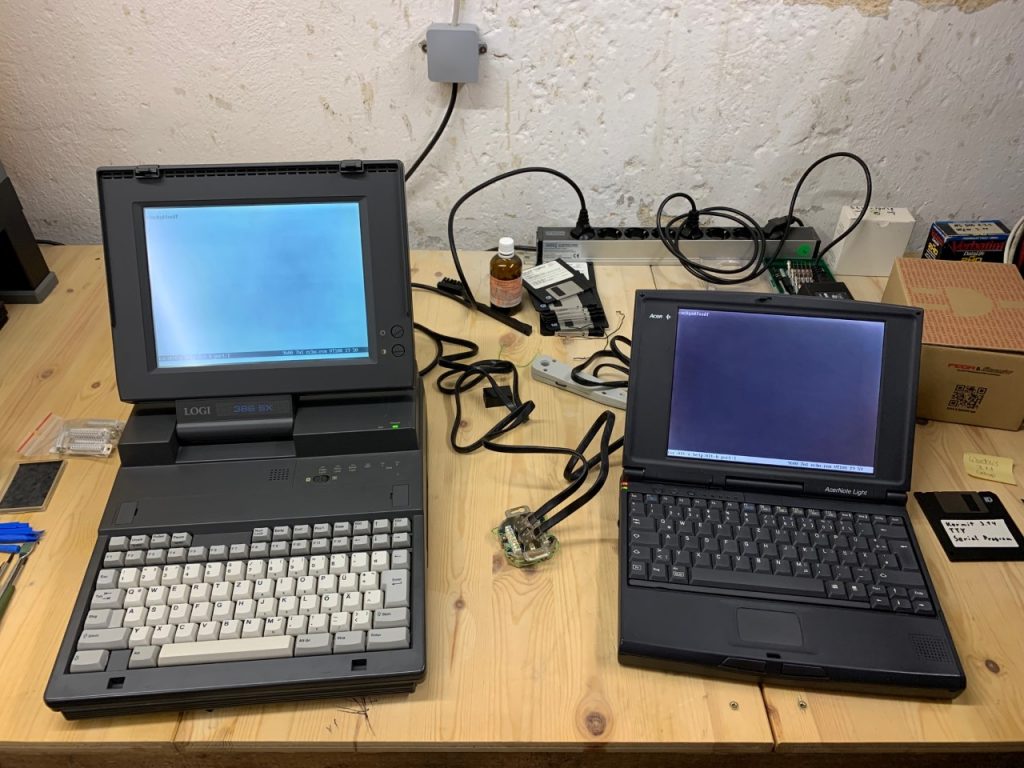
After several attempts to figure out where the serial connection of the Nova 2 is, we found an important clue in the manual:
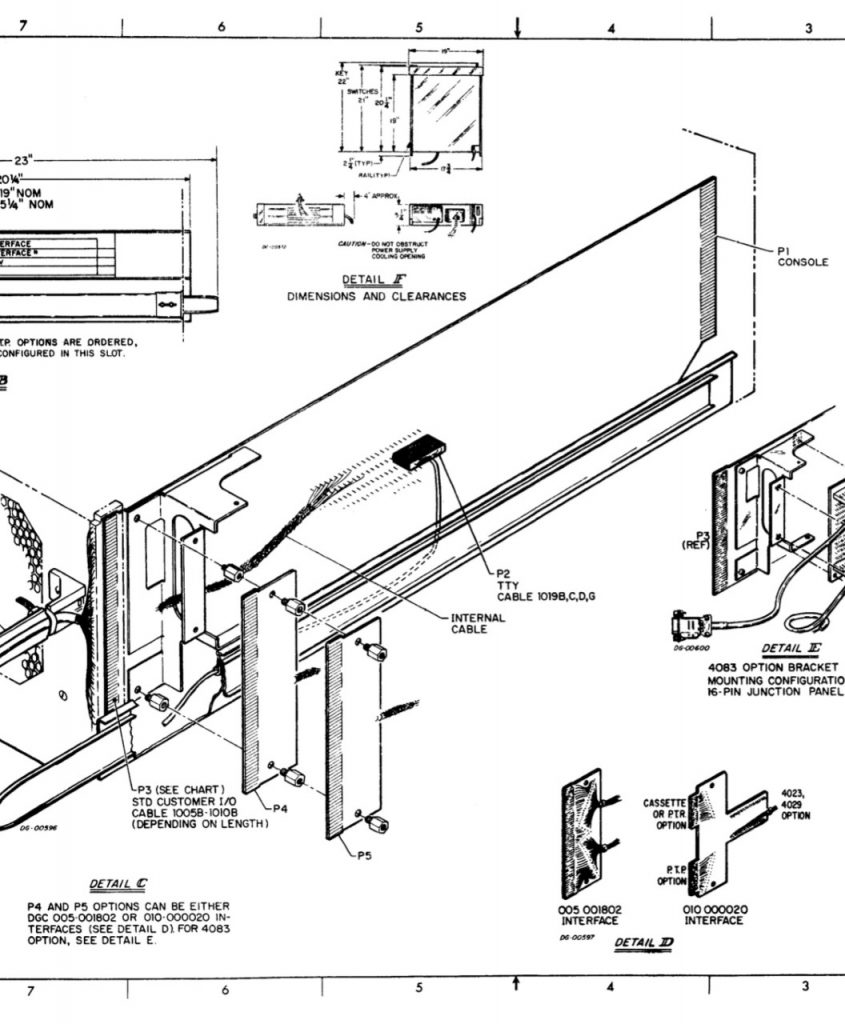
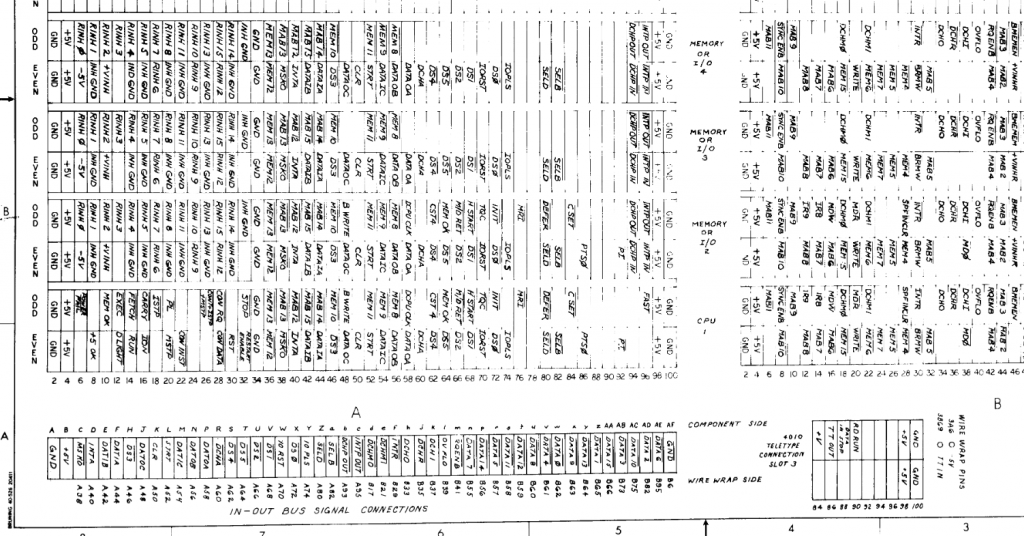
Now unfortunately we found out, that the pin assignments point us to something called a current loop serial connection. And since the contemporal terminals we got with this machine are not (YET) working. We are now unable to connect them to our software emulated terminal, due to a lack of hardware compatibility.
http://bitsavers.org/pdf/dg/Nova_2/Nova2_Schems_1973.pdf
A next hint was a sticker on the basic IO board that says TTY 20mA. This means, that the serial connection does not require the usual TX, RX and Ground pins, but a VccTX, TX, VccRX and RX pin. A common ground is not necessary in this scenario, since the bits are not determined by voltage level like in a RS232 connection, but rather than by the flow of 20mA of electrical current.
So since this was quite a show stopper for the day, I decided to order a Wieseman und Theis current loop adapter for 30 bucks on ebay, since 20mA current loops seemed to be quite common in industry for machinery and automation, so these things can be found quite cheaply. While waiting for this to arrive, we showcase below an inventory of the boards in the computer with a short description of what they (supposedly) do:
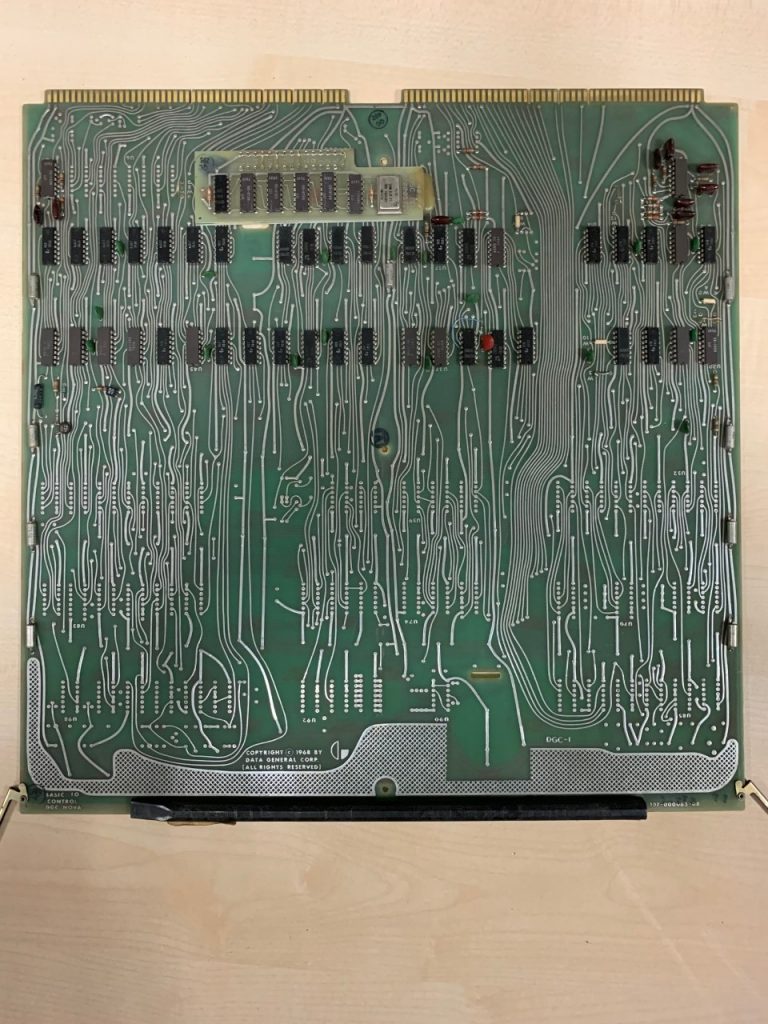
DG Basic IO Board
maybe for a second TTY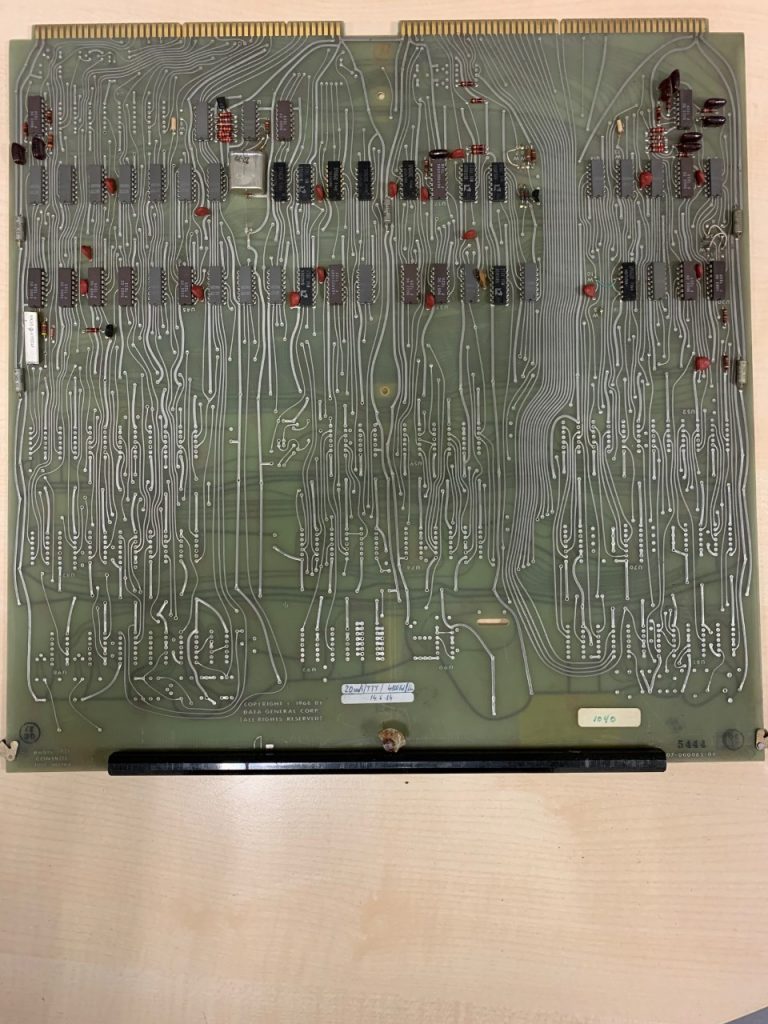
DG Basic IO Board
this was in the mandatory slot 3 for main TTY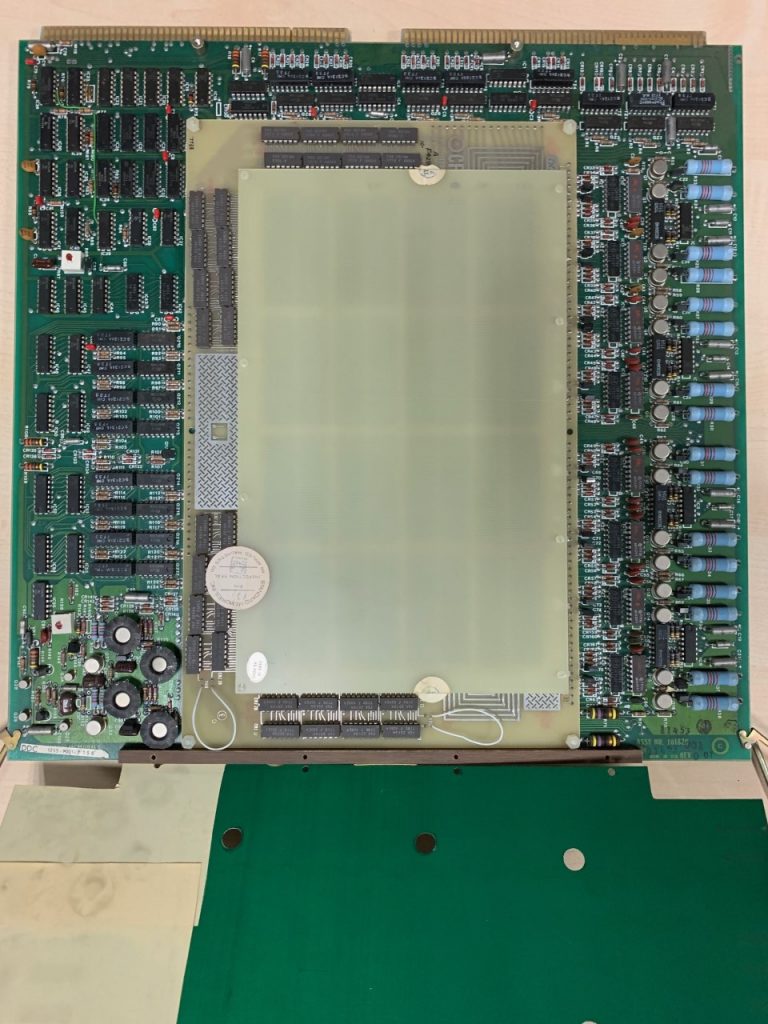
One of the two core memory cards
not sure how many kilowords of memory yet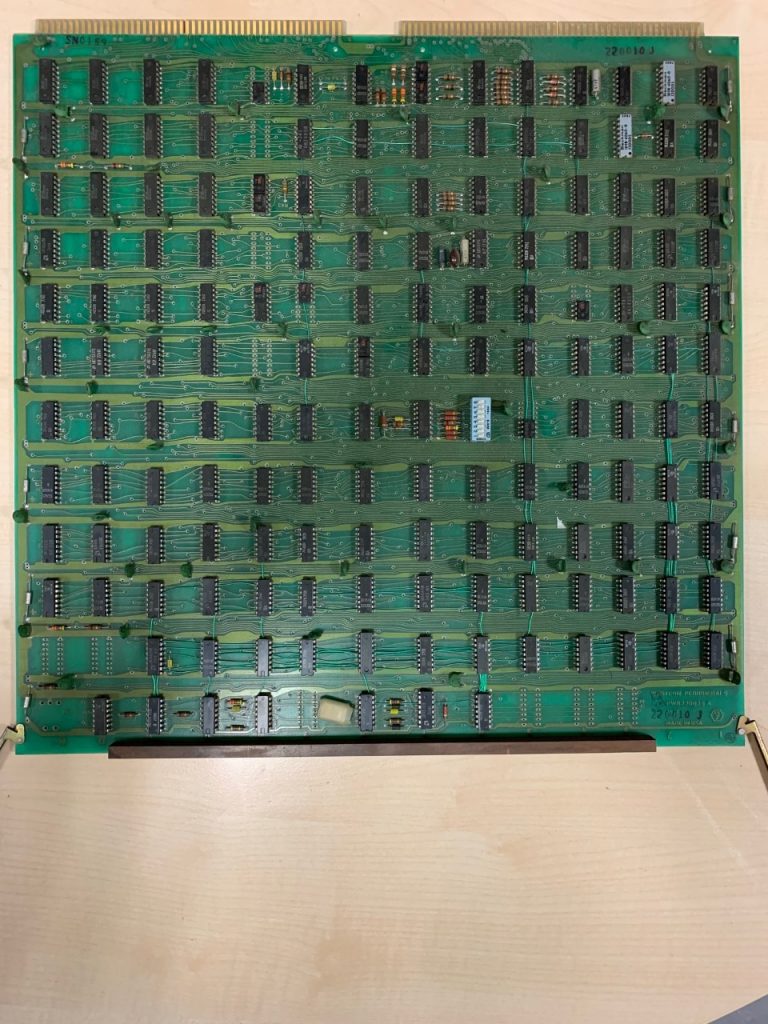
Hard Drive controller 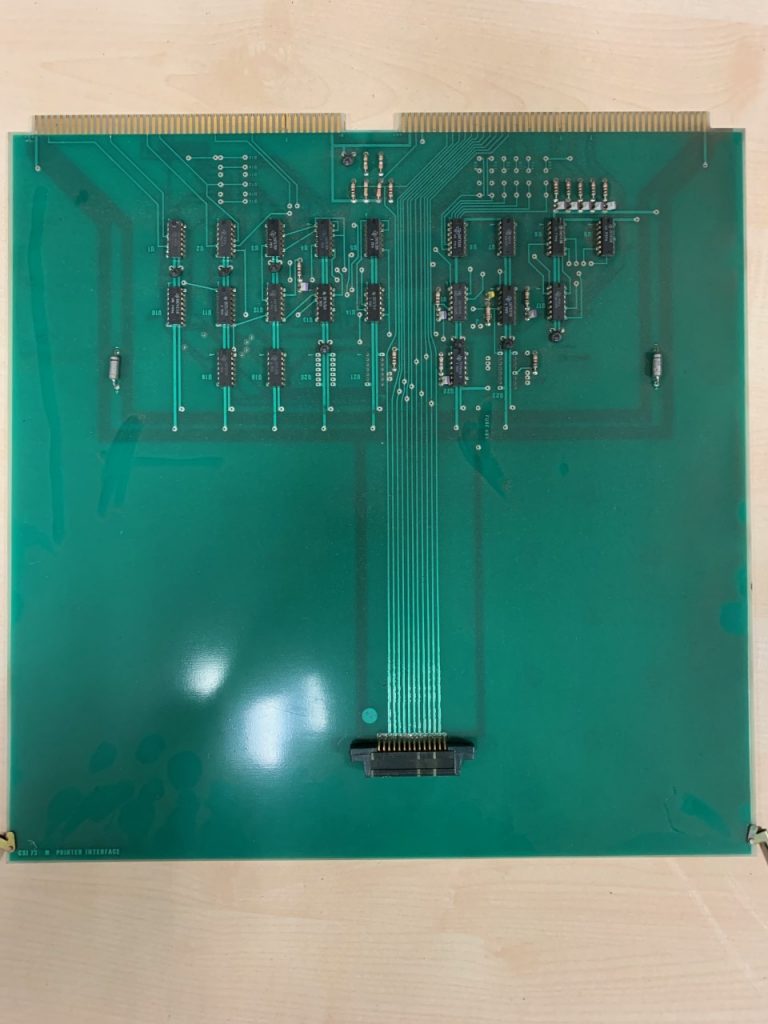
Printer controller 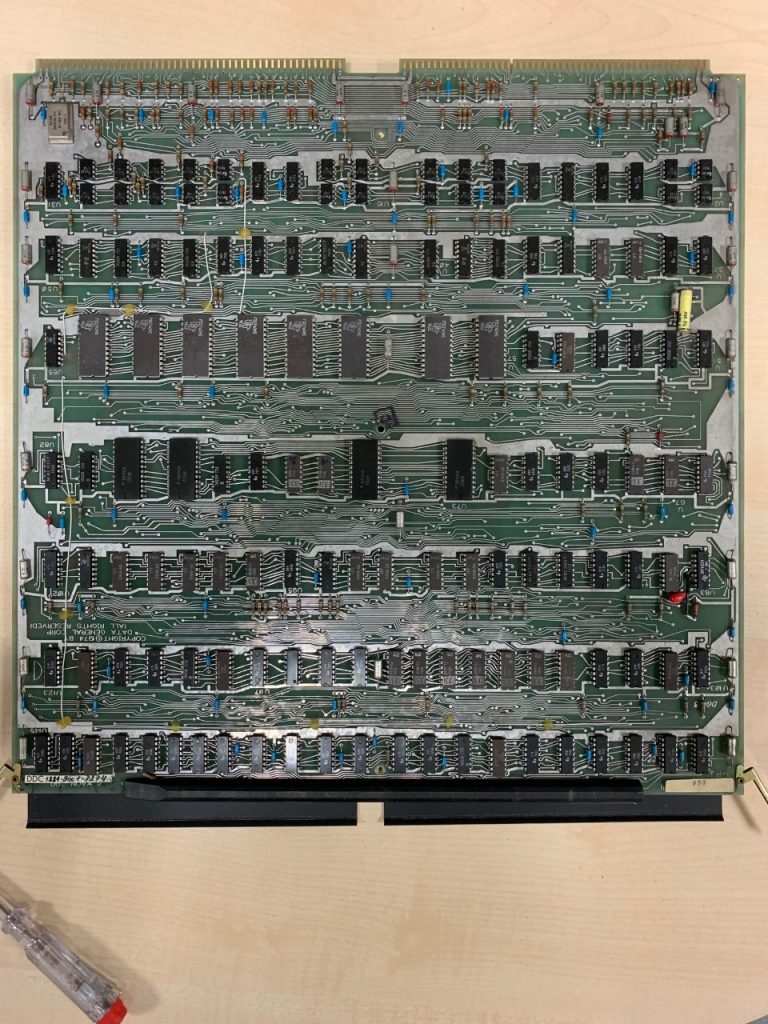
Main processor board 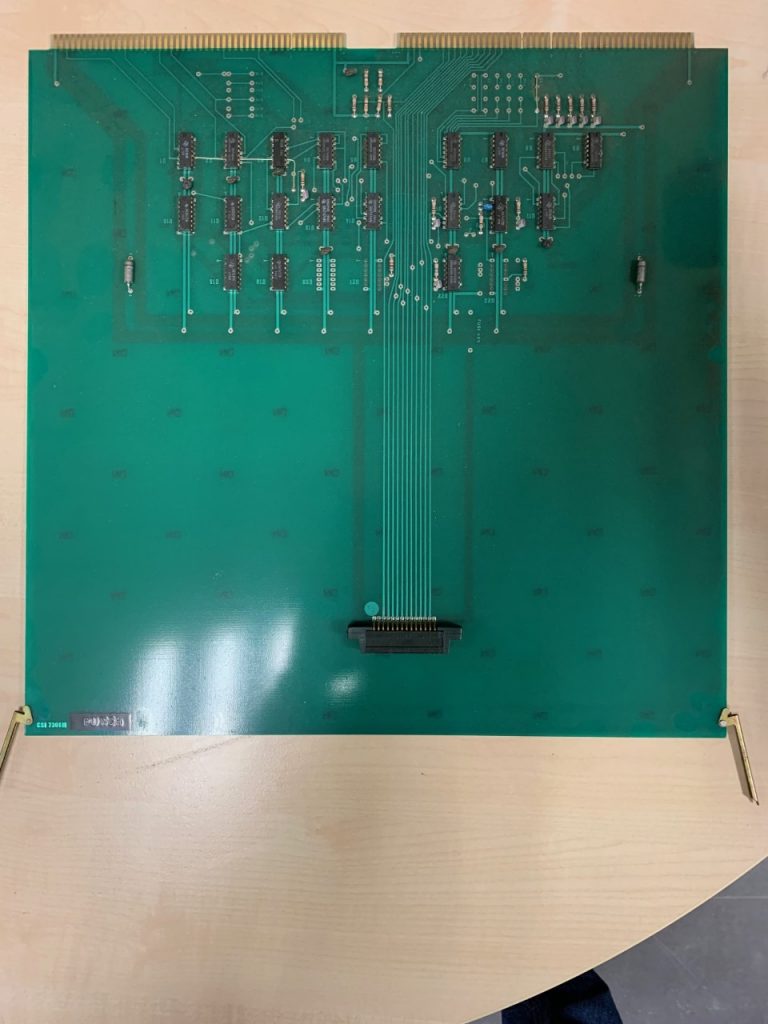
Paper card or tape punch 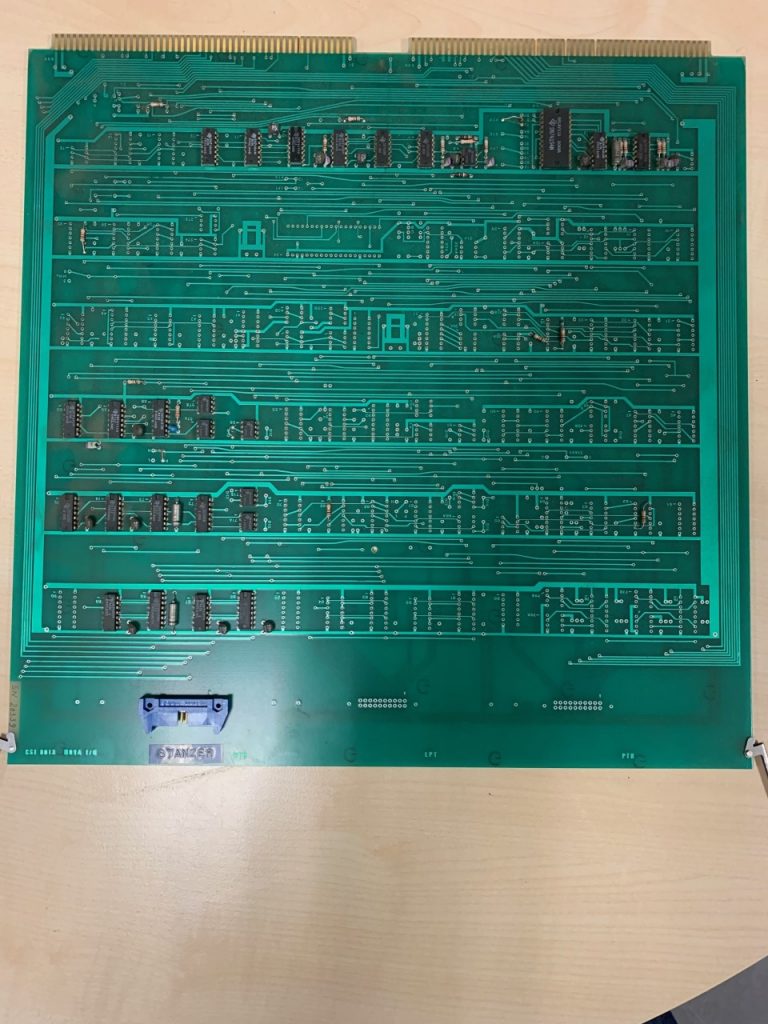
Paper card or tape punch
And now as a special treat, we carefully took the time to open one of the core memory modules, to show you the beautiful art and great craftsmanship that went into these things.
If I’m correct, this thing is able to store 4000 words of data, in this computer since it is a 16-Bit system, this would mean 64000 bits of memory, or 8 kilobytes per core memory module (we have two).

